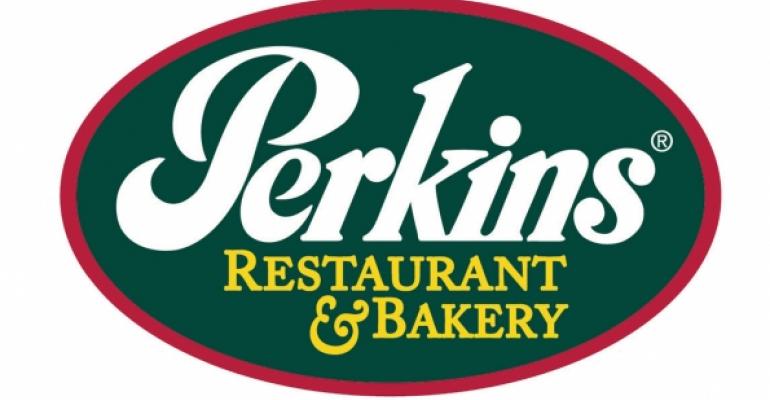Jeff Warne was named CEO of Perkins & Marie Callender’s, parent company of Perkins Restaurant & Bakery, in 2012, one year after the company emerged from bankruptcy.
Warne wasted no time in working to fix the assets at Perkins Restaurant & Bakery. By the end of last year, Perkins remodeled nearly half of the 132 company-owned locations, and spruced up 40 of the 271 franchisee locations.
The result on sales has been notable. Perkins reported this week that its same-store sales in 2015 rose 4.5 percent and transactions increased 3 percent. Remodeled stores led the way.
“It was a very good year,” Warne said.
“We have not had a systemwide remodel mandate for over 12 years before we kicked the project off,” he added. “We were really in need of it, in need of much more common design elements across the system.”
Warne said that Perkins tested and refined its remodel program extensively in 2013 and began sprucing up restaurants in earnest in 2013 and 2014. The goal is to remodel the entire system by 2018. The cost of the more extensive remodel, with new signage, a redone bakery and dining room, costs about $250,000. A less pronounced remodel costs about $200,000.

Such remodels are vital for restaurant chains that ask customers to eat inside, where they are most likely to want nicer facilities.
“Even after a while, a clean, dated restaurant has a negative perception,” Warne said.
To be sure, the remodel wasn’t the only change that helped the chain regain some momentum.
Perkins reimaged its menu as well as its restaurants. The chain researched customer preferences and aggressively worked on food innovation, Warne said. In December, it rolled out a menu overhaul with 25 new items. The menu includes higher quality ingredients and fresh product offerings.
“It’s one of the most aggressive menu rollouts I’ve done in my career,” Warne said. “We’re changing the perception of our food.”
Perkins has also worked on its marketing. Last year, the company hired the Buntin Group to work on a traditional and digital marketing strategy. The chain offered promotions such as “Great Plates $4 to $8” and its “Pie Society Monday.” Both helped generate traffic.
The chain’s Buy 3-Get 3 promotions, meanwhile, helped lift bakery sales from 6.1 percent of total sales in 2014 to 8 percent last year. Much of that lift came from add-on sales.
Bakery is a key element for Perkins, and its new remodel includes that bakery front and center, displaying pies and muffins where consumers will buy them when they pay their bill.
“Bakery is a differentiator for us,” Warne said. The display gives consumers a higher perception of the chain’s food quality. “It gives a quality halo over the rest of our food. It helps improve the perception of the whole menu,” he said.
Family dining has long suffered from poor perceptions of food quality, but in recent years the chains have aggressively worked to change those views — with tremendous success.
Almost across the board, family dining chains had the best 2015 of any sector in the restaurant business. Denny’s, IHOP and Cracker Barrel Old Country Store, among others, have generated considerable sales momentum with menu innovation and store remodels. In a recent survey, 69 percent of all family-dining restaurant operators said they were optimistic about the future in a National Restaurant Association survey.
That was higher than any other sector — including the much-ballyhooed fast-casual business.
The chains have considerable wind at their backs, thanks to low gas prices, which appear to be helping lower income customers the most. And the economy is improving.
“There’s just a lot of things right, right now,” Warne said. “There’s low interest rates. Unemployment is dropping. Rising wages. Gas prices.”
And consumers love breakfast, even when it’s not breakfast. That’s a huge boon for family-dining chains that specialize in breakfast offerings. “A lot of people, when they think about Perkins, they immediately think of breakfast,” Warne said.
Well over half of the chain’s product mix is breakfast items — though its sales are remarkably balanced throughout the day. Only 30 percent of its sales actually come at breakfast time, while 35 percent come at lunch, 28 percent dinner and the rest late night. All those dayparts generated sales increases last year, Warne said.
And while the entire family dining sector is flourishing, Warne was quick to point out that Perkins has been outperforming that business. Its same-store sales beat the family dining sector, as measures by The NPD Group, for eight of the past nine quarters.
“Family dining has done very well,” Warne said. “But we led the industry.”
Contact Jonathan Maze at [email protected]
Follow him on Twitter at @jonathanmaze

